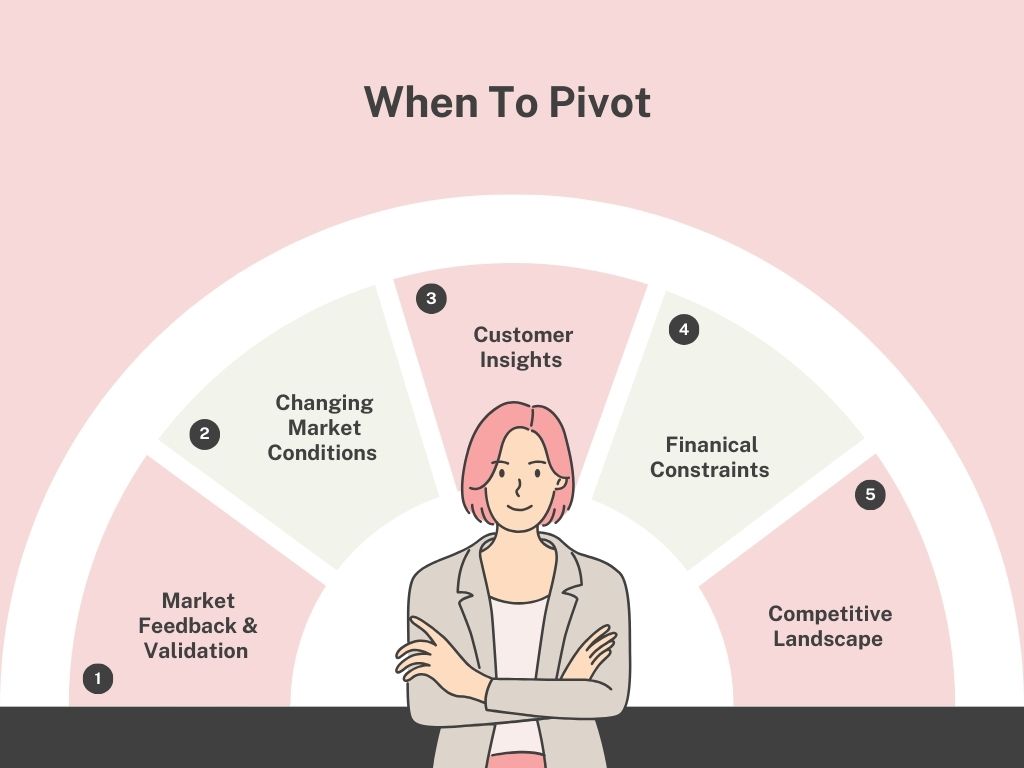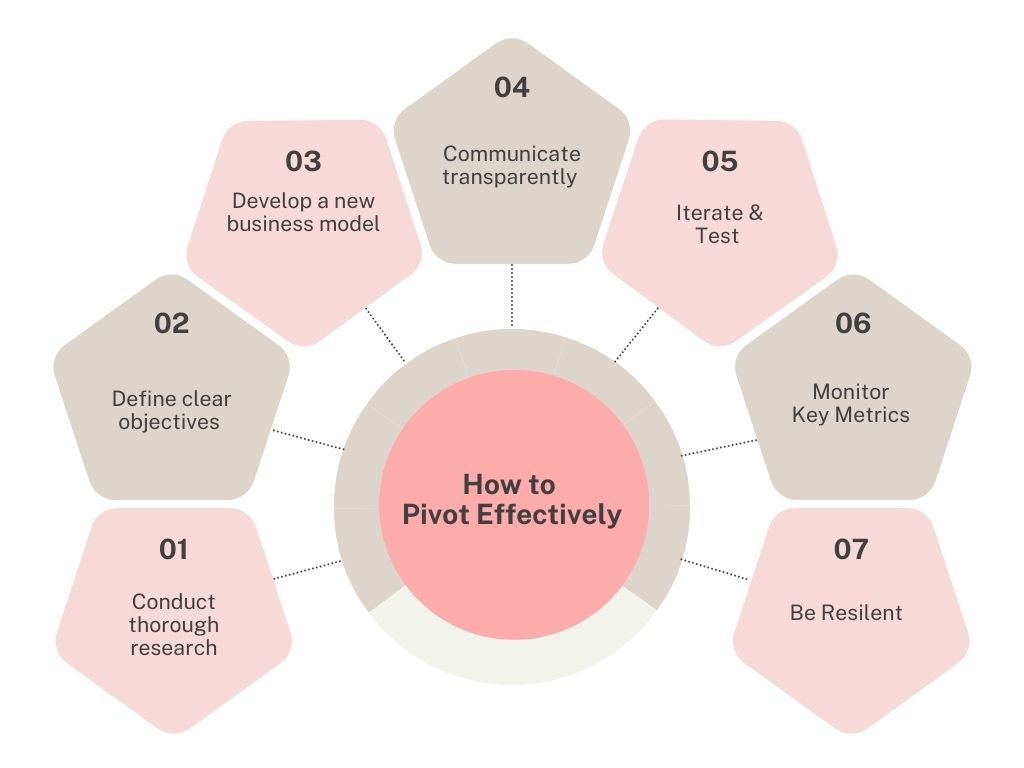Starting a new business is a thrilling adventure, but it’s also a journey filled with uncertainty and challenges. Many startups find themselves at a crossroads where they must decide whether to stick with their original business plan or make a strategic shift. This process is known as “pivoting.” In this blog, we’ll explore what pivoting is, when to pivot, and how to pivot effectively in the world of startups.
What is Pivoting in a Startup?
Pivoting in a startup refers to the strategic decision to change the core aspects of your business model, product, or target market to adapt to changing circumstances or improve your chances of success. It is not an admission of failure but a recognition of the need for change in response to evolving market conditions, customer feedback, or other factors.
When to Pivot?

1. Market Feedback and Validation:
One of the most common reasons to pivot is when your product or service is not gaining traction in the market. If your target customers are not responding positively, it may be time to reevaluate your business model.
Example:
Imagine you’ve developed a mobile app for pet owners to schedule vet appointments and order pet supplies. However, after launching, you receive feedback that users find the app confusing, and they prefer other, more user-friendly alternatives. This feedback is a clear signal that a pivot is needed to redesign the app’s user experience and features to better align with customer preferences.
2. Changing Market Conditions:
External factors, such as economic shifts or emerging technologies, can significantly impact your startup’s success. If your original plan is no longer relevant or effective, it might be time to pivot.
Example:
You’re operating a small artisanal coffee shop, but economic downturns have led to decreased consumer spending on premium coffee. In response to these changing market conditions, you decide to pivot by introducing a more budget-friendly coffee line to cater to a wider customer base and adapt to the economic challenges.
3. Customer Insights:
Pay close attention to customer feedback and behavior. If you notice patterns of dissatisfaction or unmet needs, consider pivoting to address those concerns.
Example:
Your startup offers an online tutoring platform for students, but you consistently receive feedback from students and parents that they are dissatisfied with the limited subject offerings. In response, you decide to pivot by expanding your curriculum to cover a broader range of subjects, addressing the unmet needs of your users.
4. Financial Constraints:
Running out of funding or struggling to generate revenue can be a strong signal that a pivot is necessary to achieve sustainability.
Example:
A tech startup that initially aimed to develop a complex software product finds itself running low on funding and unable to complete the project as planned. Faced with financial constraints, they pivot by shifting their focus to offering consulting services based on their existing expertise, generating revenue while preserving their core team’s skills and knowledge.
5. Competitive Landscape:
If new competitors are entering the market or existing ones are gaining a competitive edge, you may need to pivot to differentiate yourself or enter a less crowded space.
Example:
Your startup enters the e-commerce space with a niche product, but soon, you notice that several established competitors with similar offerings are dominating the market. To stand out and find a unique position, you decide to pivot by rebranding and focusing on eco-friendly and sustainable packaging, differentiating yourself in a less crowded aspect of the market.
How to Pivot Effectively?

1. Conduct Thorough Research:
Before making any decisions, gather data and insights that support your pivot strategy. Understand your target market, competition, and potential risks.
2. Define Clear Objectives:
Clearly articulate what you aim to achieve with the pivot. Whether it’s increasing revenue, expanding your customer base, or improving product-market fit, having clear objectives will guide your efforts.
3. Develop a New Business Model:
If necessary, create a new business model that aligns with your revised goals and market conditions. This may involve changes to your product, pricing, distribution channels, or customer segments.
4. Communicate Transparently:
Inform your team, investors, and stakeholders about the pivot. Transparency is essential for maintaining trust and support during a period of change.
5. Iterate and Test:
Start small and test your new approach. Gather feedback from customers and iterate based on their responses. Be open to further adjustments as you learn from real-world experiences.
6. Monitor Key Metrics:
Define key performance indicators (KPIs) that align with your new objectives and track them diligently. This will help you measure the success of your pivot and make data-driven decisions.
7. Be Resilient:
Pivoting can be challenging and emotionally taxing. It’s important to stay resilient and adaptable as you navigate the uncertainties that come with change.
Examples of Startups Who Have Pivoted
Twitter originally started as a podcasting company called Odeo. When Apple announced the podcasting feature in iTunes, it threatened Odeo’s business model. In response, the company pivoted and focused on creating a new platform for short-form messaging, which eventually became the Twitter we know today.
Stewart Butterfield, the co-founder of Slack, initially started a gaming company called Tiny Speck. Their flagship game, Glitch, didn’t gain much traction, so they decided to pivot and focus on the internal communication tool they had developed for their team. That communication tool evolved into Slack, which has become a widely-used platform for workplace messaging and collaboration.
Groupon, originally called The Point, started as a platform for collective action and fundraising. When that model didn’t take off, the founders pivoted to create Groupon, a platform for group discounts and deals. Groupon quickly gained popularity and became a successful e-commerce platform.
Instagram began as Burbn, a location-based check-in app with features similar to Foursquare. After recognizing that users were primarily using the photo-sharing feature, the founders decided to pivot and focus solely on photo sharing. This pivot led to the explosive growth of Instagram as a social media platform centered around visual content.
Airbnb initially started as AirBed & Breakfast, a platform for renting air mattresses in a shared space during large events. When the founders realized that the most popular listing was a private room, they pivoted to focus on whole-home rentals, leading to the global success of Airbnb.
Conclusion
Pivoting is a crucial tool in a startup’s arsenal, allowing businesses to adapt and thrive in dynamic environments. When done strategically and thoughtfully, pivoting can be a path to renewed growth and success. By staying attuned to market feedback, being willing to change course when necessary, and following a structured approach, startups can pivot effectively and increase their chances of long-term success. Remember, a pivot is not a sign of weakness but a demonstration of your commitment to building a sustainable and successful business.







